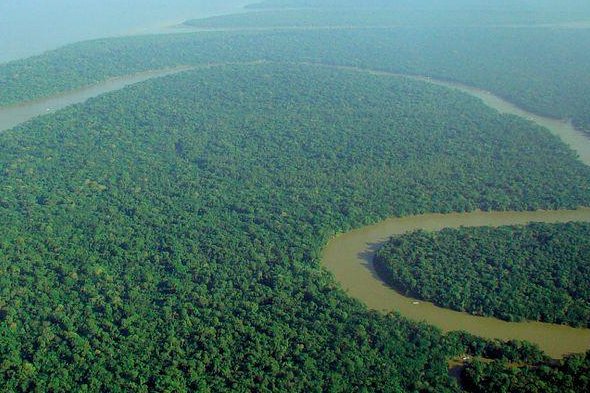Aerial view of the Amazon Rainforest (File/Lubas/Wiki Commons)
(UPI) -- After more than 100 experts analyzed data from 1,170 surveys, it is now estimated that almost 400 billion trees belonging to 16,000 different species grow in the incredibly diverse Amazon Basin and Guiana Shield (Amazonia).
The findings, which have been published in the journal Science, were reached by analyzing the abundance, frequency and distribution of thousands of trees. The Amazon Basin -- which includes parts of Brazil, Peru and Columbia -- and the Guiana Shield together cover an area roughly the size of the continental United States.
“In essence, this means that the largest pool of tropical carbon on Earth has been a black box for ecologists, and conservationists don't know which Amazonian tree species face the most severe threats of extinction," said study author Dr. Nigel Pitman.
It is estimated that half the total number of trees belong to just 227 species.
"Thus, the most common species of trees in the Amazon now not only have a number, they also have a name," said co-author Dr. Hans ter Steege. "This is very valuable information for further research and policymaking."
According to the discussion section of the analysis:
"The finding that Amazonia is dominated by just 227 tree species implies that most biogeochemical cycling in the world’s largest tropical forest is performed by a tiny sliver of its diversity. The causes underlying hyperdominance in these species remain unknown. Both competitive superiority and widespread pre-1492 cultivation by humans are compelling hypotheses that deserve testing.
Although the data suggest that spatial models can effectively forecast tree community composition and structure of unstudied sites in Amazonia, incorporating environmental data may yield substantial improvements. An appreciation of how thoroughly common species dominate the basin has the potential to simplify research in Amazonian biogeochemistry, ecology, and vegetation mapping."
The authors say these forecasting advancements can help researchers studying the more than 10,000 "rare, poorly known, and potentially threatened tree species in the Amazon."







